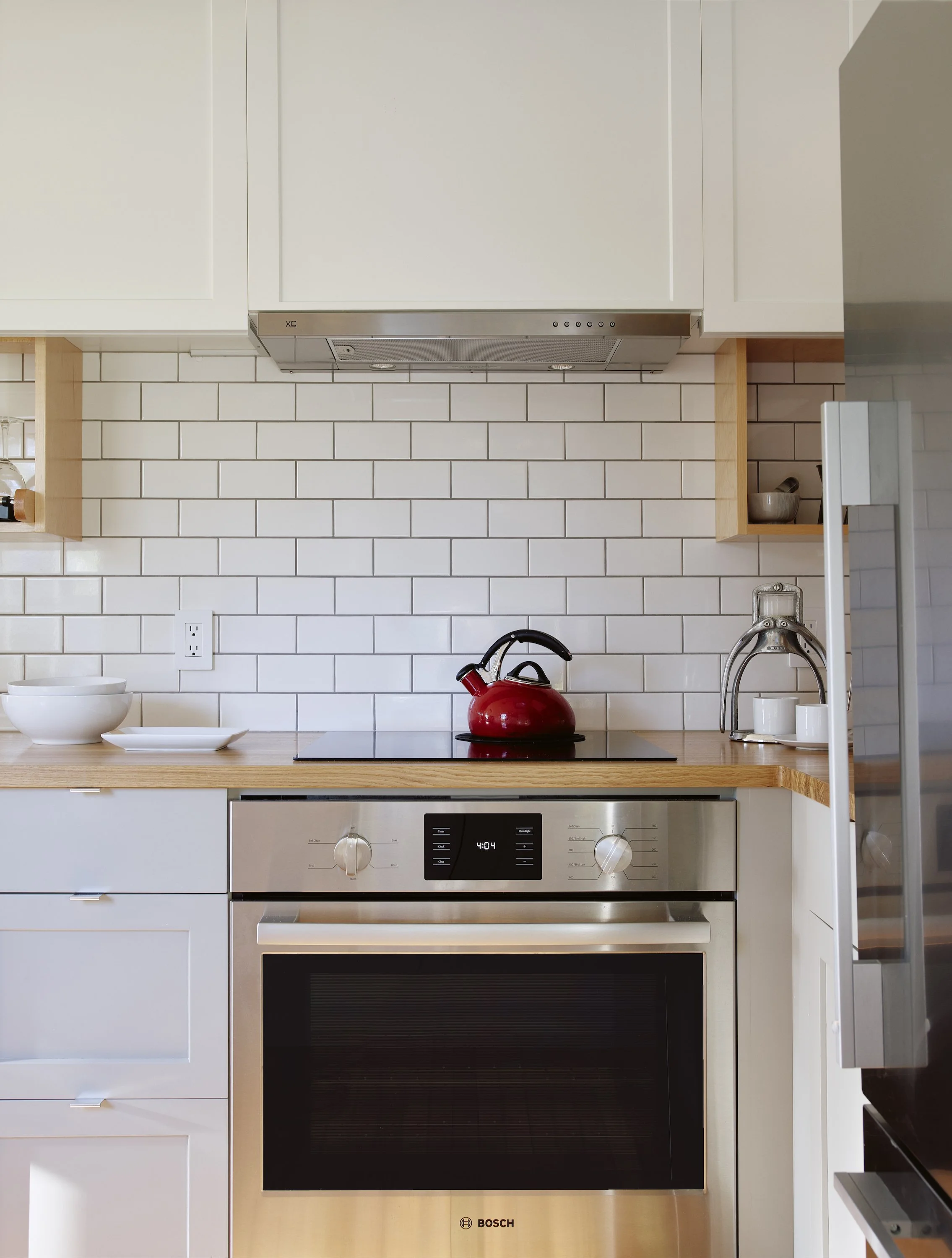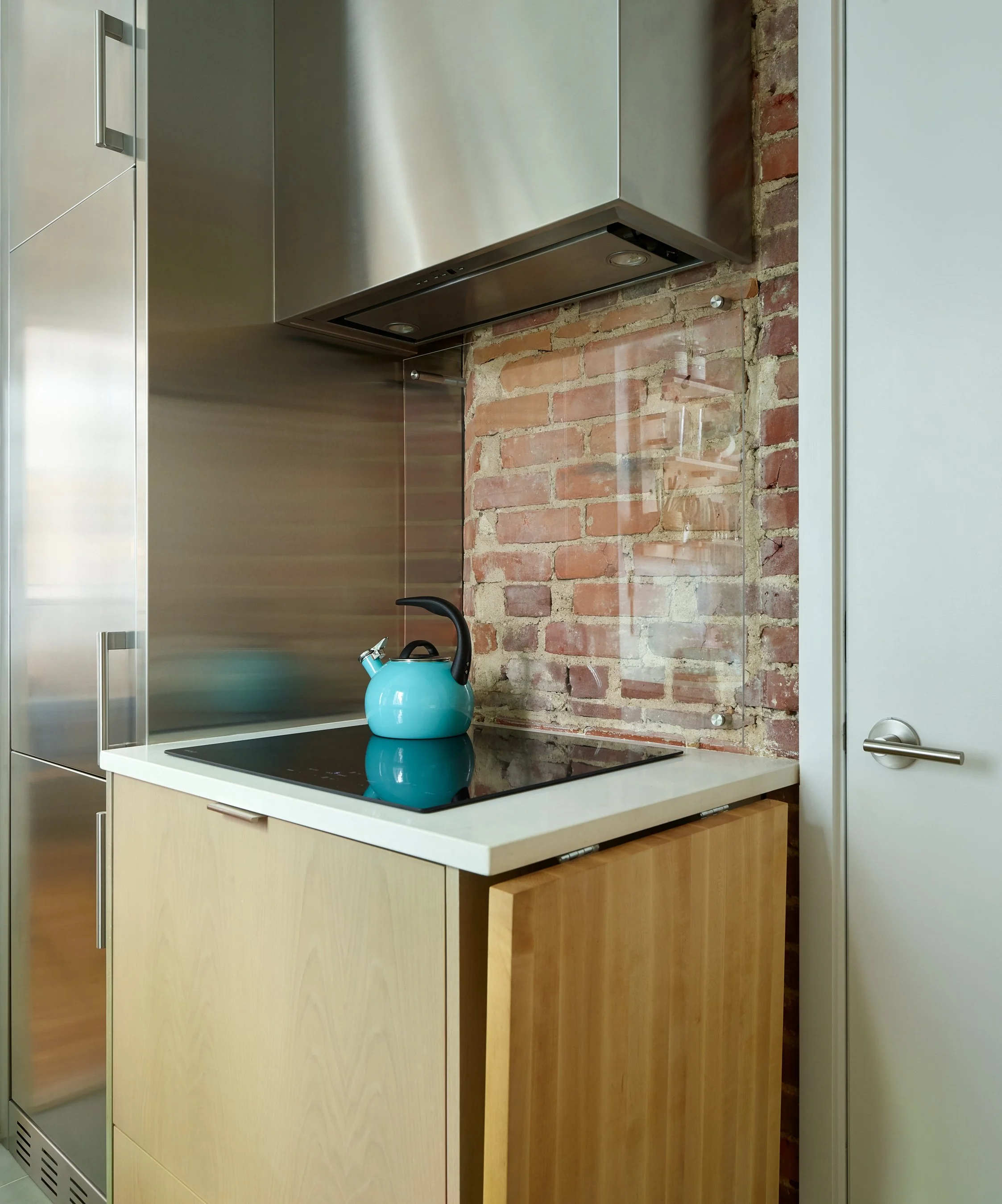Why Induction? Induction versus gas cooking
You know the saying “if you can’t stand the heat, get out of the kitchen”? Combine a summer heatwave with gas and traditional electric cooktops and you might be racing for the closest shower – or restaurant.
Summertime often finds me in my petite Provincetown cottage kitchen. Despite the heat, my daughter and I still manage to do some cooking. One of our summer favorites is our homemade sauces - hot fudge and caramel – perfect on a hot day to pour on ice cream.
I am not sure I would be as enthusiastic to make sauces that require precision high temperatures in the summer if not for my induction cooktop. One of my favorite features of induction cooking is the lack of excessive heat generated. It’s the cookware itself that heats up and transfers this heat to the contents of the pot. If the cooktop surface feels hot, it’s the residual heat from the pan, not the heating elements themselves. An added bonus: the cooktop may feel hot to the touch but not hot enough to cook those caramel splatters on the surface glass. Once the surface is cool to the touch, any spills clean up easily on the smooth and flat glass surface. No heavy grates to move or nooks and crannies to scrub clean like a gas cooktop.
Fast and Safe
In induction cooking, the heat is generated within the cookware and then this heat is transferred almost immediately to the items in the pot, making it much faster than standard electric or gas cooking. I currently have a gas range in Boston and find that I become impatient waiting for the pasta water to boil! As for the ovens in induction ranges, they broil, bake, and self-clean like other electric ovens.
My induction cooktop has a touch-lock on its surface so no accidentally turning on the cooktop – a great safety feature in a home with young kids. Once turned ON, no pot on the element means no heat and the element turns OFF. Since heat is generated from within the cookware itself, the element (or burner) will never be as hot as an electric or gas cooktop. And with no gas flame, there are fewer opportunities to burn yourself or inadvertently catch a sleeve in the flame.
Bosch Induction Cooktop Range
More reasons to love induction: Improved indoor air quality
Indoor air quality is also improved by using induction rather than gas cooking. According to the UCLA Fielding School of Public Health, while cooking with gas indoors, concentrations of carbon monoxide and nitrogen dioxide can exceed national air-quality standards. It seems that gas ranges can leak methane even when they are off. To read more about this study, here is the link:
Massachusetts has a statutory target to reduce greenhouse gas (GHG) emissions to net zero by 2050. Since residential energy use accounts for about 25% of GHG emissions, MA state legislators and local governments are pushing to ban natural gas hook-ups in homes in favor of electric-only. In Brookline, for example, new building codes aim to prohibit or reduce natural gas in new and significantly renovated homes. Sounds like it’s time for all of us to take a closer look at electric induction cooking.
But what about radiation?
I found that one initial off-putting thing about cooking with induction is the clicking or humming sound that I sometimes hear. It can sound magnetic or “metallic-y” and I wondered if I was being inundated with radiation – a concern I’ve heard expressed by others.
According to the helpful folks at The Rational Kitchen – see the link here: https://therationalkitchen.com/induction-cooking-safe/
All electrical appliances generate electromagnetic fields (EMFs)--AKA radiation! As do all the cell towers, radio towers, and power lines you see and live with every day.
EMFs exist along a spectrum. If you understand this, even in an undetailed way, you can see that EMFs are just a part of everyday life, from listening to the radio to using your cell phone to laying on the beach. Our vision and our hearing are both the result of human interaction with different electromagnetic waves.
More importantly, you can begin to sort out the non-harmful EMFs from the harmful ones. And if you can do this, you can make rational choices about which EMFs you'll want to avoid, and which ones make your life easier.
Most modern houses have 200 amperes of power running into them. This is simply not enough power to create EMFs that can damage the human body. And even if it were enough power to be harmful, turning off the offending appliance--or simply stepping a few feet away from it--solves the problem. (Why does this solve the problem? Because all household appliances emit non-ionizing radiation.)
No home appliances emit dangerous levels of radiation, non-ionizing or otherwise. And with the consensus among scientists being that there is no cumulative effect of non-ionizing radiation, there is little evidence that you are in any danger from any of your home appliances, including your induction stove. And this is true even if you’ve got every appliance in your home running at full power at the same time, all bombarding your body with non-ionizing radiation.
So, the short answer is “Yes but not the dangerous kind of radiation.” Whew! I am not sure I would be willing to give up my induction cooktop now. Have more questions about induction versus other cooking fuels? I’m always happy to speak with clients and prospective clients about appliances and other design elements.



